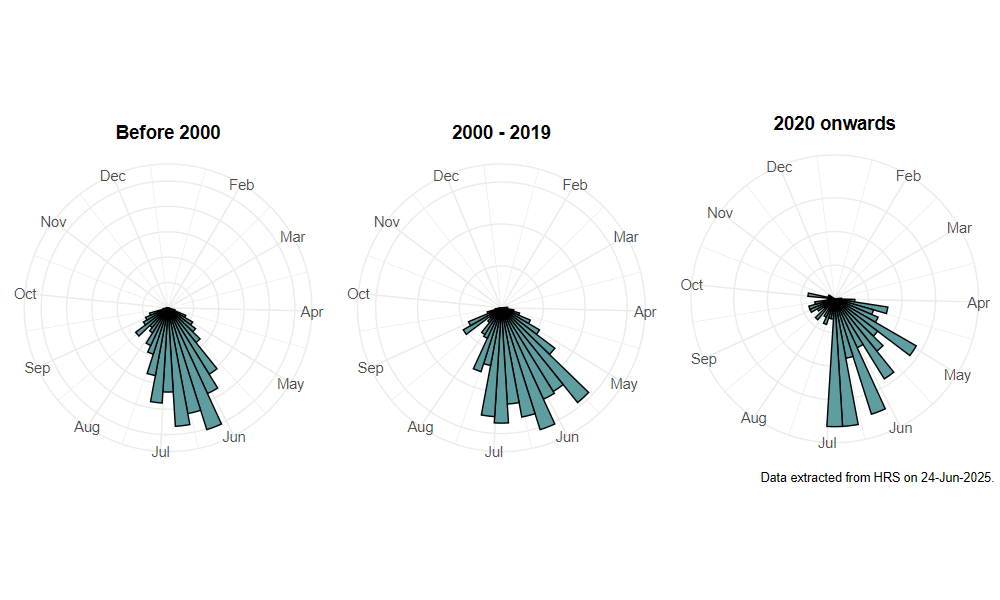Platycheirus fulviventris (Macquart, 1829)
Identification
Identification difficulty = 3. ![]()
![]() according to Ball & Morris, 20241
according to Ball & Morris, 20241
Biology
The larva feeds on the aphid Hyalopterus pruni on monocotyledonous plants in wetlands. It is usually found in marshes, by ponds, ditches or slow flowing rivers, usually where lush vegetation such as Common Reed Phragmites australis or Reed Sweet Grass Glyceria maxima occurs. Adults fly amongst stands of reeds and sedges frequently settling on the stems and will visit flowers of sedges Carex sp., grasses and plantains Plantago sp.
Flight period
The following plots show the number of unique records per week excluding those reported to be of immature stages.

Distribution
This species is very local, though often abundant where it occurs. It is most frequent in the lowlands of south-east Britain, especially wetlands along the east coast of England, but it is also widely scattered in the north and west. It becomes increasingly scarce further north, but occurs in reasonable numbers in some wetland localities in south east Scotland (Stubbs, 1996)2. Has shown a marked decline in the frequency with which it is recorded during the last few decades.

Trends
The following plots show the Frescalo TFactor vs year and a map of the rescaled frequency (all records) for the species.